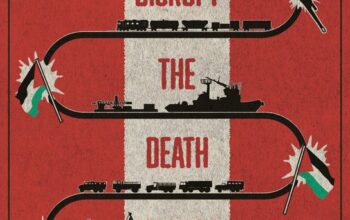Sometimes, it can feel as though the notion and very concept of peace, is intangible and something outside of our comprehension. What does peace mean? What does peace in society look like?. The Institute for Economics and Peace (IEP) uses data driven research to show that peace is a positive, tangible and achievable measure of human well-being and development. In this article, we will be looking at IEP’s Positive Peace Report for 2022 to understand what they think are the key factors that build, predict and sustain peace this year. In the setting of a new coronavirus variant, omicron, which is seeing infection rates soar, we will take a zoom into how IEP believe societies can have resilience against this virus.
But first, what is ‘positive peace’ according to the IEP?. Positive Peace is defined as the attitudes, institutions and structures that create and sustain peaceful societies. It is conceptually and empirically related to many constructive aspects of social development and can be used in multiple contexts (IEP, 2022, p.4). Most simply, it can be described as creating an optimal environment for human potential to flourish.
But what does a flourishing environment look like? What are the things that we can notice in our everyday lives to understand the factors that create lasting peace? According to the IEP countries with higher levels of positive peace are those which are:
- More resilient
- Associated with robust and thriving economies
- Have better performance on ecological measures
- Have higher levels of wellbeing and happiness
- Stronger measures of social cohesion
- Have greater satisfaction with living standards and more (IEP, 2022, p.4).
Resilience, a topic, we will explore in more depth in a blog later this month is particularly relevant in thinking about our individual relationship with peace. For IEP, “social systems that operate with higher degrees of resilience are capable of offering more effective protection to their citizens against adverse shocks, whether political, environmental or economic” (2022, p.4). It is the ability to protect from shocks that allow societies, and the individuals within a society, to be more adept and capable of recovering. However, when we think about our own individual journeys to becoming more resilient, we see how intertwined they are with our wider environment. How can one be resilient if one does not have a good support system in place? The same can be said for societies. Therefore, the factors in which IEP associate with societies and countries with higher levels of positive peace cannot be alone. The factors must interconnect for one to see an optimal environment for human potential to flourish.
The coronavirus pandemic is a good example to understand how a country with higher levels of positive peace was better equipped to protect their citizens. In the management of the pandemic, those countries with robust and thriving economies and greater satisfaction with living standards had more hospital beds for example and alongside, strong social cohesion were able to implement trust in decisions to go into lockdowns and in vaccination roll outs.
Alongside their description of what a country with a higher level of positive peace looks like. The IEP also define eight pillars of positive peace:
- Well-Functioning Government
- Equitable Distribution of Resources
- Free flow of information
- Good relations with neighbours
- High levels of human capital
- Acceptance of the rights of others
- Low levels of corruption
- Sound business environment
Sadly, in 2021 the IEP reported that low levels of corruption was the only pillar to deteriorate (2022, p.6). This was the first time the pillar has deteriorated since 2009. It begs the question: why? What happened in 2021 to cause the deterioration? Are we more aware of corruption taking place or did we truly see an increase of corruption within our societies?.
Here might be a good moment to pause and reflect on why the IEP believe there is so much more to peace than what we might assume on the surface. The discussion of a distinction of peace can be traced to Johan Galtung, who in 1969, presented the case for different forms of violence and peace. Whereby, he proposed that it is not enough for peace to just be the absence of violence or fear of violence. Because even without violence or the fear of violence, it’s not enough to create an optimal environment for human potential to flourish.
The 2022 positive peace index ranks each country measuring against 24 indicators and each indicator fits into one of three domains: attitudes, institutions, and structures. Attitudes indicators measure social views, tensions, or perceptions. Institutions indicators represent the impact that formal and informal institutions of a society exert on peacefulness, social wellbeing and the economy. Whilst, Structures indicators access the underpinning of the socio-economic system, such as poverty and equality, or are the result of aggregate activity, such as GDP (IEP, 87).
It ranked the following as the top 10 states of positive peace:
- Sweden
- Denmark
- Finland
- Norway
- Switzerland
- Netherlands
- Canada
- Australia
- Germany
- Ireland
All ten states were non movers in the top ten from last year with the only change being between Sweden overtaking Denmark to the top place.
With the following countries being ranked those states with the lowest level of positive peace index:
154: Iraq
155: Sudan
156: Eritrea
157: Syria
158: Democratic Republic of the Congo
159: Chad
160: Central African Republic
161: Yemen
162: South Sudan
163: Somali
However, maybe of most interest is noting that Syria dropped 40 places within the index and Libya, which ranks 152/163 fell by 55 places in 2022. In thinking about these two specific cases, it is interesting to think about what worsened in 2022. According to IEP, Syria saw its largest deterioration in the following pillars: good relations with neighbours, free flow of information and a well-functioning government. In the case of Libya, we saw the 2021 December elections halted at the last minute. The top three declines in the pillars in Libya were good relations with neighbours, well-functioning government, and low levels of corruption. Although change cannot occur overnight, it is interesting to zoom into these deteriorations and to understand how chronic instability can be broken down into pillars we can measure and track. Providing a better way in which to understand a social and political system which is fragile beyond using simplistic terms like ‘conflict zones’.
Despite IEP’s indicator being an analysis of more than just ‘negative peace’ it is interesting to look at how the list of the states with the lowest level of positive peace compares with International Crisis Group’s ’10 conflicts to watch in 2022’.
- Ukraine
- Ethiopia
- Afghanistan
- The United States and China
- Iran vs. the United States and Israel
- Yemen
- Israel-Palestine
- Haiti
- Myanmar
- Islamist Militancy in Africa
Only Yemen finds itself on both lists, but of course we see the impact of Islamist Militancy in Africa in Chad, Central African Republic and Somali. What International Crisis Group’s list reminds us though, is that although traditional notions of ‘war’ are in retreat and battle deaths have declined drastically, this is only small aspect of the impact of conflict. The suffering that comes with conflict: such as economic insecurities, starvation, and displacement, are the elements in which only striving for positive peace can work to overcome. It is not enough for us to be just in a state where violence or fear of violence is absent.
Eleri Connick
References
Galtung, J. (1969). Violence, Peace, and Peace Research. Journal of Peace Research, 6(3), pp.167-191.
Institute of Economics and Peace. (2022). Positive Peace Report 2022. Accessed: Link
International Crisis Group. (2021). Ten Conflicts to Watch in 2022. Accessed: Link



